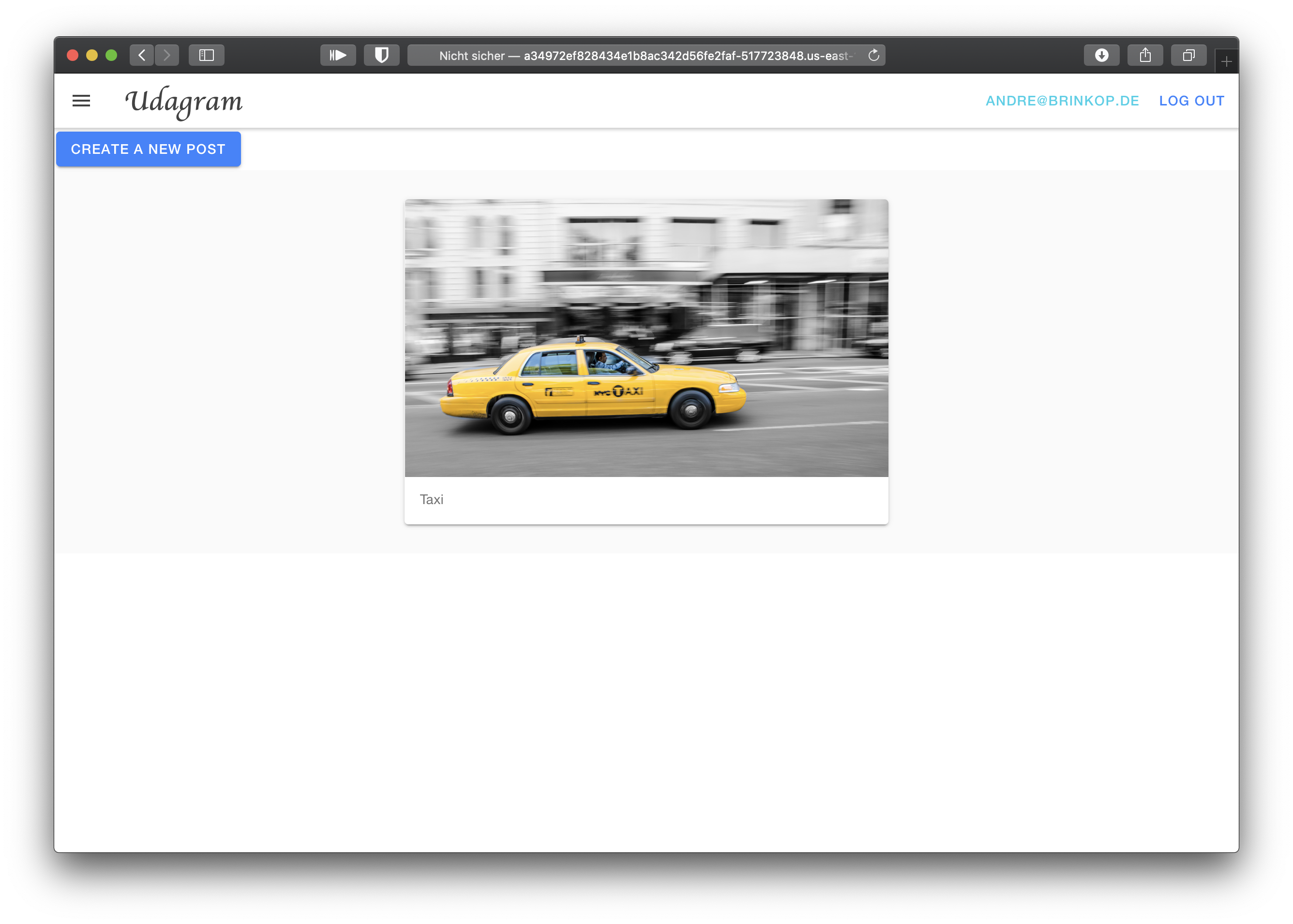Udagram is a simple cloud application developed alongside the Udacity Cloud Engineering Nanodegree. It allows users to register and log into a web client, post photos to the feed, and process photos using an image filtering microservice.
The project is split into multiple parts:
- Frontend - Angular web application built with Ionic Framework
- Backend RESTful API - Node-Express application split into two microservices
- Reverse Proxy - API Gateway build with Nginx to delegate traffic towards the backend
tip: it's recommended that you start with getting the backend API running since the frontend web application depends on the API.
- The depends on the Node Package Manager (NPM). You will need to download and install Node from https://nodejs.com/en/download. This will allow you to be able to run
npmcommands. - Environment variables will need to be set. These environment variables include database connection details that should not be hard-coded into the application code.
A file named set_env.sh has been prepared as an optional tool to help you configure these variables on your local development environment.
We do not want your credentials to be stored in git. After pulling this starter project, run the following command to tell git to stop tracking the script in git but keep it stored locally. This way, you can use the script for your convenience and reduce risk of exposing your credentials.
git rm --cached set_env.sh
Afterwards, we can prevent the file from being included in your solution by adding the file to our .gitignore file.
Create a PostgreSQL database either locally or on AWS RDS. Set the config values for environment variables prefixed with POSTGRES_ in set_env.sh.
Create an AWS S3 bucket. Set the config values for environment variables prefixed with AWS_ in set_env.sh.
- To download all the package dependencies, run the command from one of the microservice directories
udagram-restapi-feed/andudagram-restapi-user/:npm install . - To run the application locally, run:
npm run dev
- You can visit
http://localhost:8080/api/v0/feed(orhttp://localhost:8080/api/v0/user) in your web browser to verify that the application is running. You should see a JSON payload. Feel free to play around with Postman to test the API's.
- To download all the package dependencies, run the command from the directory
udagram-frontend/:npm install . - Install Ionic Framework's Command Line tools for us to build and run the application:
npm install -g ionic
- Prepare your application by compiling them into static files.
ionic build
- Run the application locally using files created from the
ionic buildcommand.ionic serve
- You can visit
http://localhost:80in your web browser to verify that the application is running. You should see a web interface.
The application is build up as multiple microservice modules. It is recommended to run the application using the provided dockcer-compose files.
The application includes configuration scripts that make it easy to deploy all components to a Kubernetes cluster using kubectl.
